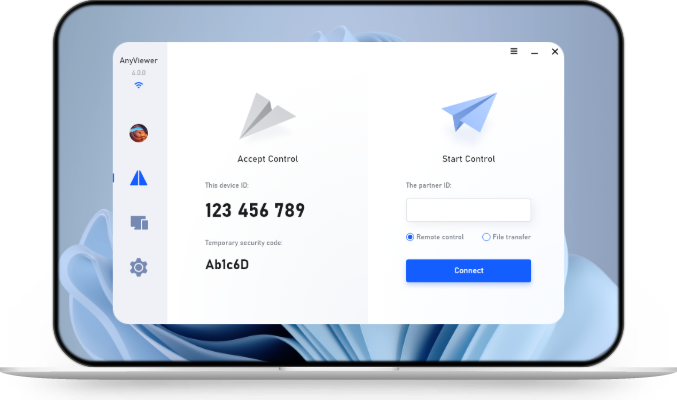Unveiling the Secrets: Can TeamViewer Hear Sound?
Dive into the intricacies of TeamViewer's sound transmission. Follow a step-by-step guide to configure audio settings and troubleshoot common sound-related issues. Explore the advantages of AnyViewer as the top alternative for remote access with exceptional sound.
Introduction
In the fast-paced world of remote work and collaboration, tools like TeamViewer have become indispensable. However, one lingering question often arises: Can TeamViewer hear sound? Let's delve into the intricacies of TeamViewer's audio capabilities and explore the best alternative for remote access with superior sound quality.
Remote access tools have revolutionized the way we work, allowing seamless collaboration across geographical boundaries. In this digital era, the importance of sound in remote access applications cannot be overstated. The ability to transmit audio during remote sessions enhances communication and productivity.
Can TeamViewer Hear Sound?
Exploring TeamViewer's Audio Capabilities
TeamViewer, a popular remote access software, does indeed support sound transmission. By default, the software is configured to transmit audio along with the visual interface. Users can enjoy a comprehensive remote experience, including sound, to foster effective communication.
Common Issues Users Face with Sound on TeamViewer
While TeamViewer excels in sound transmission, users may encounter common issues. From distorted audio to sound lag, troubleshooting these problems is essential for a seamless remote experience. Understanding the default settings and addressing potential issues ensures users make the most of TeamViewer's audio capabilities.
How to Enable Sound on TeamViewer
Step-by-Step Guide on Configuring Audio Settings
Enabling sound on TeamViewer is a straightforward process. Users can navigate through the software's settings to ensure audio transmission is activated. A step-by-step guide empowers users to customize their audio preferences, enhancing the overall remote experience.
Troubleshooting Tips for Sound-Related Problems
Despite TeamViewer's robust audio features, occasional issues may arise. From checking device compatibility to adjusting internet bandwidth settings, troubleshooting tips address common sound-related problems. Ensuring a smooth audio experience requires proactive problem-solving.
Alternatives to TeamViewer
Introduction to AnyVieweras the Best Alternative
While TeamViewer stands tall in the remote access arena, exploring alternatives is prudent. AnyVieweremerges as the frontrunner, offering a compelling set of features, including top-notch sound transmission. The user-friendly interface and rapid file transfers make AnyViewera worthy competitor.
Comparison of Sound Features between TeamViewer and AnyViewer
In the battle of remote access tools, AnyVieweroutshines is the best alternative for sound quality. A detailed comparison highlights the advantages of AnyViewer, making it an attractive choice for those seeking superior audio performance during remote sessions.
| Feature | TeamViewer | AnyViewer |
|---|---|---|
| Sound Control | Basic sound settings | Advanced remote sound options |
| Ease of Use | Intuitive interface | Streamlined user experience |
| Audio Quality | Standard sound transmission | Enhanced audio capabilities |
| Overall Performance | Stable connection | Swift and responsive |
Remote Access with Sound: Best Practices
Ensuring Optimal Audio Quality During Remote Sessions
Optimizing audio quality is crucial for effective communication. Best practices include selecting the right audio settings, maintaining a stable internet connection, and considering hardware compatibility. Following these practices guarantees an enhanced remote experience.
Addressing Potential Challenges in Sound Transmission
Challenges such as bandwidth limitations and network issues can impact sound transmission. Addressing these challenges head-on ensures a reliable audio connection during remote sessions. Proactive measures contribute to a frustration-free collaboration experience.
Conclusion
In conclusion, TeamViewer indeed hears the sound, providing users with a comprehensive remote experience. However, for those seeking an alternative that excels in sound quality, AnyViewer emerges as the superior choice. The battle of remote access tools continues, and the verdict leans towards AnyViewer for those prioritizing impeccable audio performance.
FAQs
Q: Can TeamViewer Transmit Sound on Slow Internet Connections?
A: Yes, TeamViewer can transmit sound on slow internet connections, but users may experience lag or reduced audio quality.
Q: What Measures Can Improve Sound Quality in Remote Sessions?
A: To enhance sound quality, users should ensure a stable internet connection, choose optimal audio settings, and address potential hardware compatibility issues.
Q: Can TeamViewer hear the sound even if I disable it on my end?
A: No, once sound is disabled on TeamViewer, it will not transmit audio, ensuring your remote sessions remain silent.
Q: How does AnyViewerdiffer in sound control compare to TeamViewer?
A: AnyViewer offers advanced sound settings, allowing users to customize audio preferences with greater precision, providing a superior remote audio experience.
Q: Can you hear sound on TeamViewer if the remote computer has muted its speakers?
A: No, TeamViewer's sound transmission is independent of the remote computer's speaker settings. If the sound is disabled on TeamViewer, it won't be transmitted, even if the remote speakers are unmuted.

